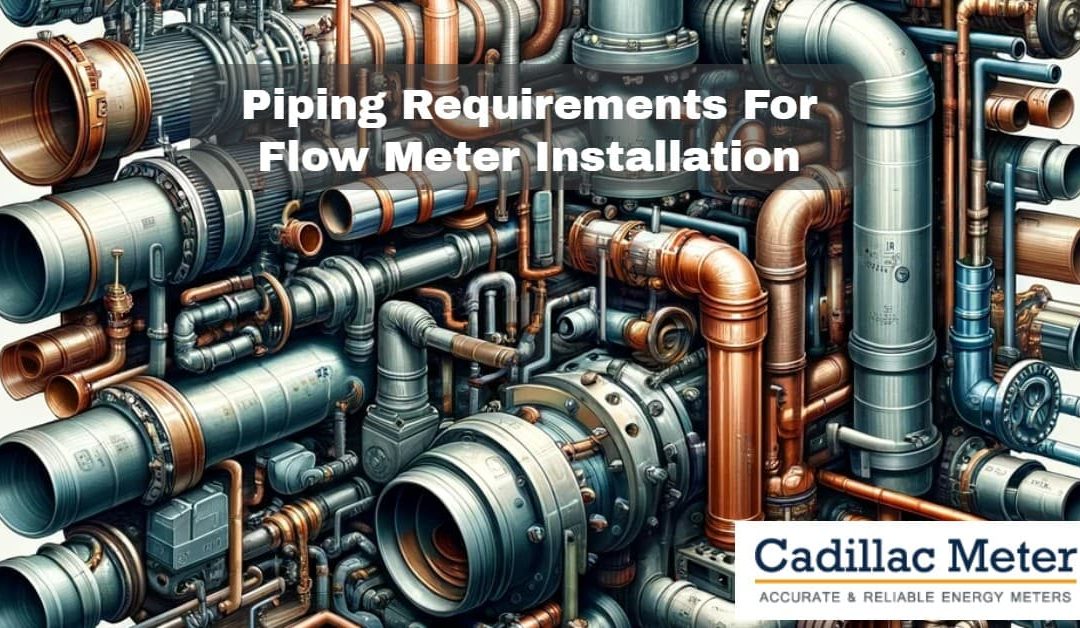A distorted fluid velocity profile is one of the most common reasons for inaccurate flow meter readings. Swirls or other distortions in the flow are caused by the tees, elbows and valves that make piping systems functional. But, to keep your flow meter functional as well, there are some piping requirements regarding the fluid’s flow profile, which is almost entirely dependent on a system’s piping orientation.

Optimally, fluid with a “laminar” flow profile is moving smoothly through the pipe. The velocity of laminar flow is highest in the center of the flow and slower as it reaches the pipe walls. In most cases, natural laminar flow only exists in straight-run piping. When 90 degree angles, half-open valves, misaligned flanges, or even pipe wall pitting exist within a piping system, the fluid flowing through it is disrupted, which can cause inaccurate flow meter readings. The less straight run there is before and after the flow meter, the exponentially higher the meter’s error rate percentage becomes. Because of this, flow meter manufacturers will suggest a certain length of straight-run that must exist upstream and downstream of their meters. These requirements will vary by technology and manufacturer.
Below are some very general suggestions for straight-run piping based on the type of flow measurement technology installed.
Piping Insertion
Pipes smaller than 6 inches in diameter will need, at the very least, 20x the piping diameter in straight run upstream of the meter and 10x the piping diameter in straight run downstream. Pipes 6 inches or more in diameter require 15x the piping diameter in upstream straight run and 7.5x the piping diameter in downstream straight run.
Turbine
The amount of straight run needed can depend on how many disturbances exist upstream, especially when using a turbine style flow meter. Straight run should be at least 20x the piping diameter when an elbow, tee, filter or other disruption exists upstream of the meter. But, a partially open valve upstream of the meter will require 25X the piping diameter, and multiple disruptions, such as a spiral or consecutive elbows, can require 50x the piping diameter. In general, downstream straight run requirements for turbine flow meters are around 5-10x the piping diameter.
Magmeter
Magmeters can be installed in horizontal lines, however this orientation is not ideal. In this case, there must be at least 5x the piping diameter in straight run upstream of the meter and 3x the piping diameter downstream. Any less than 3x the piping diameter, and tests show that flow disruptions can add as much as 1.5% to the meter’s error rate. Best practice in magmeter installation calls for the device to be located on a section of vertical piping with flow moving upward.
Vortex
When installing a vortex flow meter, it doesn’t matter how the piping is arranged. What’s more critical is that the fluid fills the pipe completely and that the flow profile is completely free of any swirls or distortions. This usually requires a couple of control valves, used to reduce the pipe size and keep the meter full, and a generous amount of upstream straight run piping. Between the upstream control valve and the meter there must be 30x the piping diameter in straight run. And, between the meter and the downstream valve there should be straight run equaling at least 5x the piping diameter.
Ultrasonic
Ultrasonic meters with multiple beams will be affected less by flow profile disturbances than meters with just one beam. Like many others, this type of flowmeter should be installed upstream of elbows, valves, or reducers. Make sure to allow for the longest possible straight run piping between the meter and the obstacle. The length of straight run can be as short as 5x the piping diameter as long as an additional error of 1% is acceptable.
For more advice about how to install a flow meter with adequate straight run within your piping system, call Cadillac Meter today at 503-624-6331 or send us an email.



